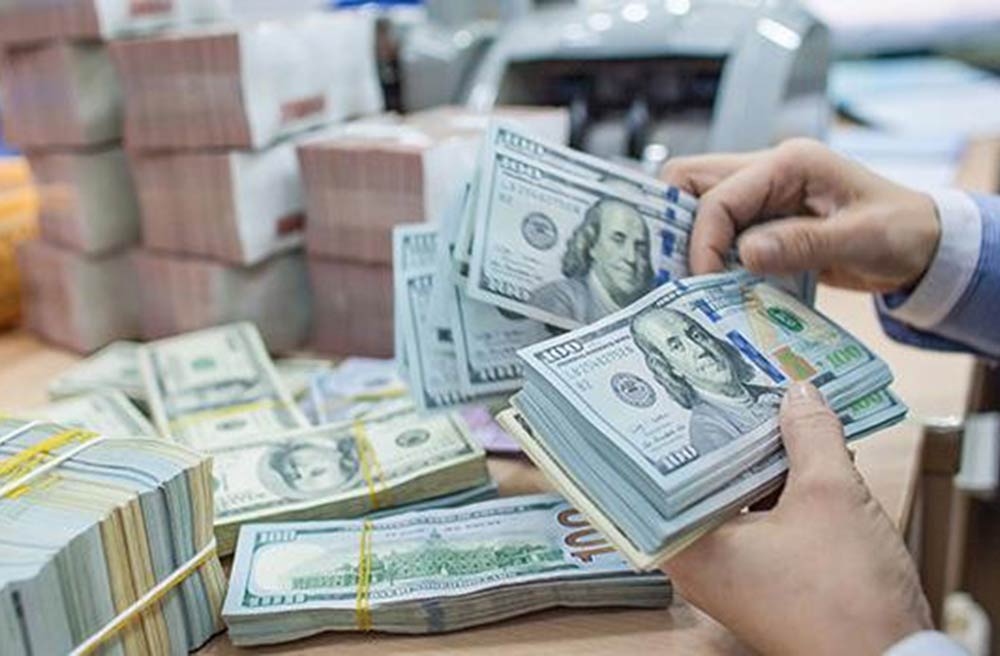Rethink the US dollar
The Standard Bank’s view on the dollar has been that President Trump will leave the greenback at a lower level at the end of his term than where he found it, just like his 2017-21 presidency.

However, this bank did expect some early-term dollar strength as Trump unleashed punitive tariffs on the rest of the world. The tariffs are coming, but not the US dollar strength. What’s more, it feels a number of other factors have sprung up that leave the near-term outlook for the US dollar worse than it had anticipated.
The key to this rethink is that the return on US assets has deteriorated substantially since Trump came into office. Equities are starting to underperform badly after years of US ‘exceptionalism’ and treasury yields have fallen relative to peers. On stocks, the S&P 500 is down 2% so far this year in euro terms compared to the 10% rise in euro zone stocks. US stocks have underperformed most other peers as well.
This is important as overseas investors own almost twice as many US stocks as they do bonds and there’s been a worrying rise in the proportion of global stock market gains in recent years that are attributable to the US. In other words, there is a significant concentration risk in US equities and that could cost the dollar if it unwinds.
We have also seen a significant decline in treasury yields compared to other countries. Again, using the euro zone as an example, the 10-year treasury yield advantage over Germany has been reduced by more than 50-bps since the start of the year, which is a substantial decline in such a short space of time. Of course, US policy seems to have caused some of this as Europe is being forced to ramp up defence spending, which means higher bond issuance.
A second concern for the US dollar lies in the fact that tariff announcements to date are not producing any strength. This reflects to two things. The first is that tariffs are largely priced-in already. The second is that tariff threats have clearly taken a heavy toll on US consumer and business sentiment about growth and inflation.
Hence the market is seeing tariffs for the negative effect they have on the US economy and not any positive consequences. And even on the US trade balance, which could conceivably improve in time given the new tariffs, we are only seeing the downside now as importers scramble for goods ahead of tariff increases. The trade deficit in January of over USD150bn was 50% higher than the numbers we were seeing through much of last year. In time, this deficit may narrow once all the tariffs are in effect, but that does not help the US dollar’s short-term outlook.
Yet another issue that concerns us is the way in which US policy is moving. Here we don’t just mean tariffs, but other actions that seemingly diminish US standing and trustworthiness. Here we’d include the pause in Ukraine funding, the emphasis on crypto currencies, meddling in other countries elections (Germany’s) and more. We feel that these sorts of issues undermine confidence in US policymaking and, in association, confidence in the dollar. Now this decline in confidence might not matter if US assets were generating outsized gains but, as we’ve mentioned, they are not.
In addition, these actions might also be serving to make other countries stronger, not weaker. The best example of this, as already mentioned, is the ramping up of defence spending which is underway in Europe. One final issue that concerns us is the possibility of an accident induced by swift moves from the government to cut spending, fire workers and deregulate. For while few doubt that a decline in government spending is needed over the long haul to reign in the budget deficit, a slash and burn strategy risks unforeseen accidents that could prove costly for the economy and the US dollar.
“Thinking in terms of euro/US dollar, we had seen the euro falling into a 0.95-1.0 range in the first half of this year before a recovery to the 1.10 level by year end. We now no longer think that the euro will slide below parity and the end-year rate could be in the 1.15-1.20 region”, said the Standard Bank.








